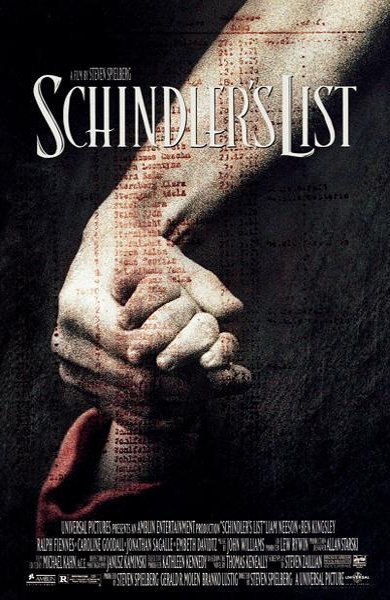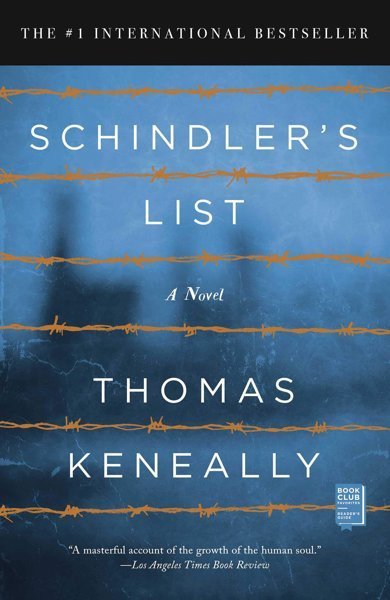The film and the book are both faithful to the historical facts and the testimonies of the survivors, but they also differ in some aspects. The film focuses more on the visual and emotional impact of the events, using black and white cinematography, music, and symbolism to create a realistic and immersive atmosphere. The film also omits some of the subplots and characters from the book, such as Schindler’s wife Emilie, his mistress Ingrid, and his Jewish friend Poldek Pfefferberg, who inspired Keneally to write the book.
The book, on the other hand, provides more background and context to the story, explaining the historical and political situation in Europe, the origins and motivations of Schindler, and the fate of the Schindlerjuden after the war. The book also explores the moral and ethical dilemmas that Schindler faced, as well as the complexity and ambiguity of his character. The book is written in a documentary style, with a lot of details and quotations from various sources.

Schindler’s List is a movie directed by Steven Spielberg in 1993 and based on the book of the same name by Thomas Keneally, first published in 1982. The movie features Liam Neeson, Ralph Fiennes, Ben Kingsley, Caroline Goodall, Jonathan Sagall, Embeth Davidtz, and others.
What users say
“The movie is better than the book”
But the book is worth reading.
Watch & Read
Get movie and book on Amazon
Watch movie
*Note: As an Amazon Associate, we earn from qualifying purchases.
Storyline
In Kraków during World War II, the Germans have forced local Polish Jews into the overcrowded Kraków Ghetto. To better protect his workers, Schindler bribes Göth into allowing him to build a sub-camp. As the Germans begin to lose the war, Göth is ordered to ship the remaining Jews at Płaszów to Auschwitz concentration camp. Schindler asks Göth to allow him to move his workers to a new munitions factory he plans to build in Brünnlitz near his home town Zwittau.
Movie vs Book
movie vs book
Comparison
The film and the book are both faithful to the historical facts and the testimonies of the survivors, but they also differ in some aspects. The film focuses more on the visual and emotional impact of the events, using black and white cinematography, music, and symbolism to create a realistic and immersive atmosphere. The film also omits some of the subplots and characters from the book, such as Schindler’s wife Emilie, his mistress Ingrid, and his Jewish friend Poldek Pfefferberg, who inspired Keneally to write the book.
The book, on the other hand, provides more background and context to the story, explaining the historical and political situation in Europe, the origins and motivations of Schindler, and the fate of the Schindlerjuden after the war. The book also explores the moral and ethical dilemmas that Schindler faced, as well as the complexity and ambiguity of his character. The book is written in a documentary style, with a lot of details and quotations from various sources.

Year
1993
Minutes
195
Movie Rate
8.90
Source: IMDb
Movie
Schindler's List
Director: Steven Spielberg
Country: USA
Year: 1993
Length: 3h15m
*Provided by Amazon

Year
1982
Pages
429
Book Rate
8.68
S: Goodreads
Book
Schindler's List
Author: Thomas Keneally
Country: Australia
First published in: 1982
Length: 429 pages
Genre: Biography
User polls & recommendations
Related Lists
Many of Steven Spielberg’s movies are based on books. What caught his attention for him to adapt each one of these books?
Biopic movies have always been popular. The books they’re based on are an opportunity to delve into the lives of those characters.
All the movies that have been nominated for Best Adapted Screenplay Academy Award since the first ceremony in 1928.
Full list of every Best Picture Academy Award-winning movie based on or inspired by books, novels, and comic books.
A movie gains interest when we know it is based on true events. And when there is also a book behind it, that book becomes essential.
“I had to unlearn a lot of novelistic stuff to do a screenplay.”
RICHARD PRICE (Writer, Scriptwriter)







Leave a Reply